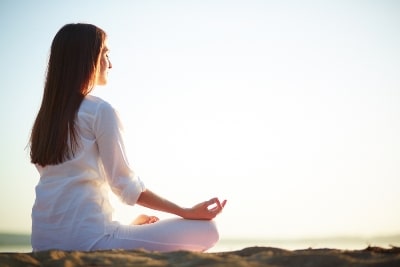Mindfulness and Meditation Techniques for Reducing Stress and Boosting Energy

In today’s fast-paced world, stress and anxiety have become an almost unavoidable part of daily life. The constant pressure to perform and succeed can leave us feeling drained and exhausted, both physically and mentally. In such situations, mindfulness and meditation can prove to be powerful tools for reducing stress and boosting energy levels.
Mindfulness is the practice of being present in the moment and fully engaged with our surroundings. It involves paying attention to our thoughts, feelings, and sensations without judgment. Meditation, on the other hand, is a technique that involves focusing our attention on a particular object or thought in order to calm the mind and achieve a state of relaxation.
Both mindfulness and meditation have been shown to have numerous benefits for our overall health and wellbeing, including reducing stress, improving sleep quality, and boosting energy levels. In this article, we will explore some of the techniques and strategies that can help you incorporate mindfulness and meditation into your daily routine.
Mindful Breathing
One of the simplest and most effective ways to practice mindfulness is through mindful breathing. This technique involves focusing your attention on your breath and observing it without trying to change it in any way. Sit or lie down in a comfortable position and take slow, deep breaths, feeling the air moving in and out of your body. If your mind wanders, simply bring your attention back to your breath.
Body Scan Meditation
Body scan meditation is a technique that involves bringing your attention to each part of your body, starting from your toes and working your way up to the top of your head. As you focus on each body part, notice any sensations, tension or discomfort you may be feeling, and try to release it with each exhale. This practice helps to promote relaxation and release tension in the body.
Guided Meditation
Guided meditation involves listening to a recorded meditation or following the instructions of a teacher or coach. This technique can be particularly helpful for beginners who may find it difficult to quiet their minds on their own. Guided meditations are available in various forms, including apps, podcasts, and online videos.
Mindful Walking
Mindful walking involves paying attention to your surroundings and the physical sensations of walking. Take a walk in a park or natural setting, and focus on the sights, sounds, and smells around you. As you walk, pay attention to the sensation of your feet touching the ground and the movement of your body. This practice helps to promote relaxation and reduce stress.
Gratitude Practice
Practicing gratitude involves focusing your attention on the things in your life that you are thankful for. This practice has been shown to have numerous benefits for our mental and emotional wellbeing, including reducing stress and promoting positive emotions. Try writing down three things you are grateful for each day, or simply take a moment to reflect on the good things in your life. In conclusion, incorporating mindfulness and meditation into your daily routine can help to reduce stress, promote relaxation, and boost energy levels. By practicing these techniques regularly, you can cultivate a greater sense of awareness and presence in your daily life, leading to a greater sense of overall wellbeing. So, take some time for yourself each day to practice mindfulness and meditation, and enjoy the benefits that come with it.